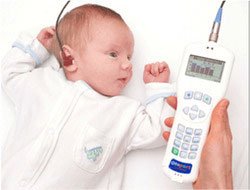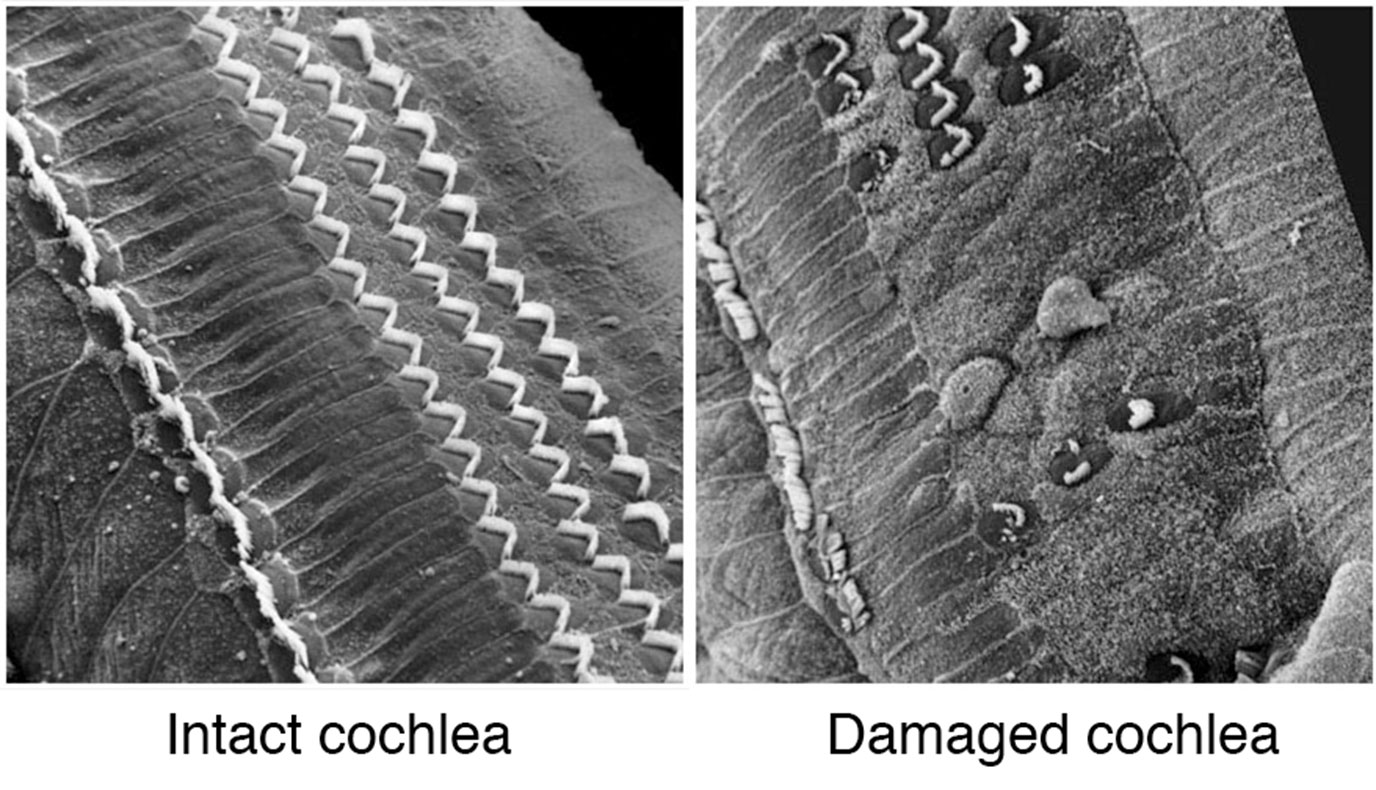What are they? How do they relate to hearing?
The ear is an amazing structure. The above pictures show the cochlea (the hearing organ, on the left) and the hair cells (on the right). Hair cells are responsible for detecting movement (a sound wave), amplifying the sound and then transforming it from a vibration to an electrical signal. This impulse is then sent to the auditory center of the brain via the cochlear nerve. Although there are upwards of 16,000 hair cells, damage to these structures is irreversible and if a hair cell is lost it cannot be regenerated. Loss of these hair cells causes a permanent hearing loss. Testing the function of the hair cells is an important component of a diagnostic hearing test. This is achieved by testing for otoacoustic emissions.
What are otoacoustic emissions?
Otoacoustic emissions are sounds produced by the inner ear when a sound is presented to the cochlea. Sound causes the hair cells to vibrate and this vibration in turn creates a very small sound that echoes back into the middle ear space. With the right equipment, this small echo can be measured with a probe tip in the ear canal.
When these echoes are present, it provides a multitude of information for the clinician:
- No blockage in ear canal (wax, debris)
- Normal eardrum movement
- Normal function of outer hair cells
People with normal hearing will produce these echoes while people with hearing loss greater than 25-30 decibels (mild hearing loss or greater) will not have otoacoustic emissions.
Uses of Otoacoustic emissions:

Otoacoustic emissions are also helpful in the diagnosis of tinnitus (ringing in the ears) and monitoring hearing for patients taking medications harmful to the inner ear. Since otoacoustic emissions tell about the fine structure of the inner ear, absent otoacoustic emissions can often alert the clinician to a hearing problem before it may show on a standard hearing test.
The Future of Otoacoustic emissions:
The clinical use of otoacoustic emissions is relatively new and research continues to show the usefulness of this test in a variety of contexts. For instance, researchers have found that otoacoustic emissions are unique to the individual, just like a fingerprint. It could be that in the future these emissions could be used to unlock a smartphone!
The audiologists at Michigan Hearing Experts and Michigan ENT and Allergy provide the utmost in comprehensive hearing care, including otoacoustic emission testing. If you suspect you may have a hearing loss, call to schedule a hearing evaluation at 616-994-2770.


